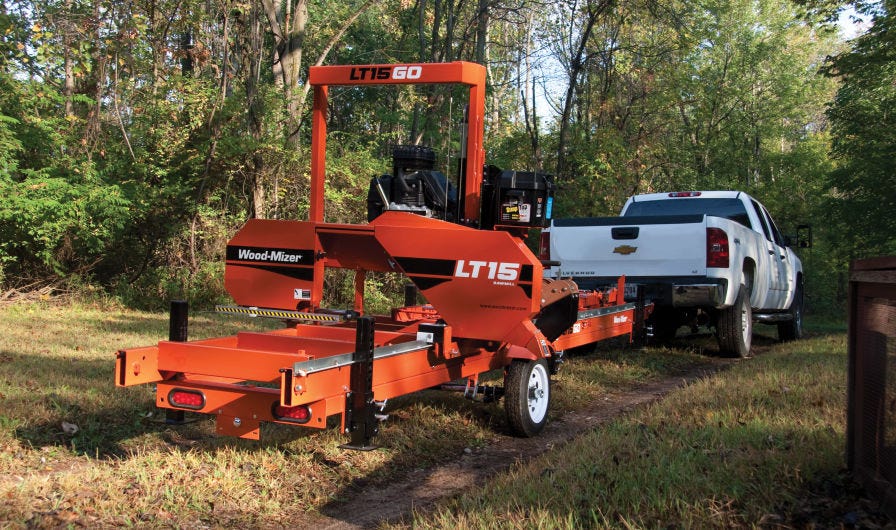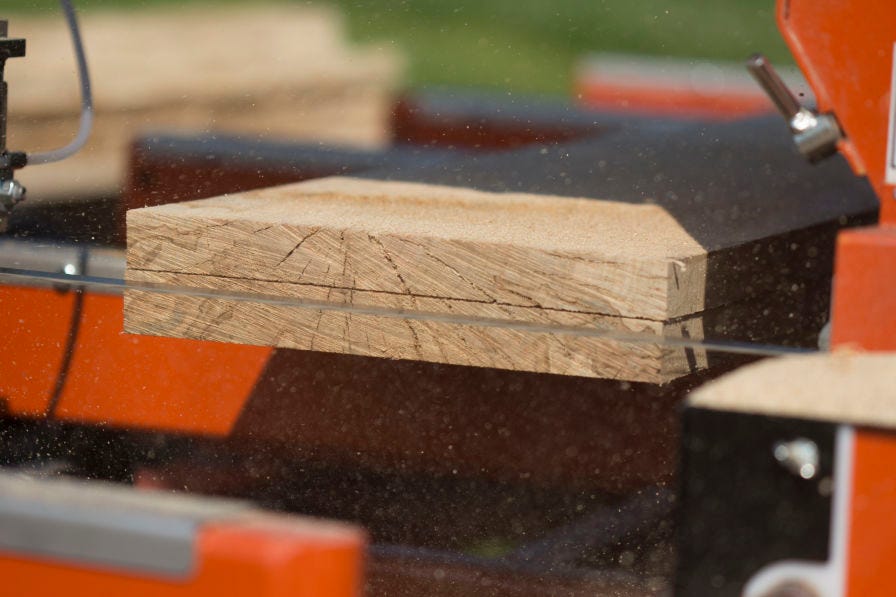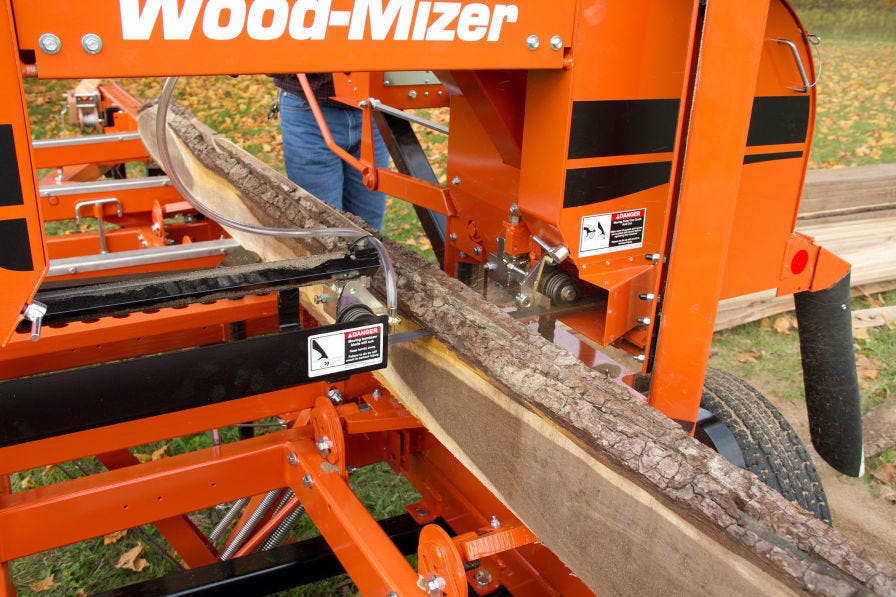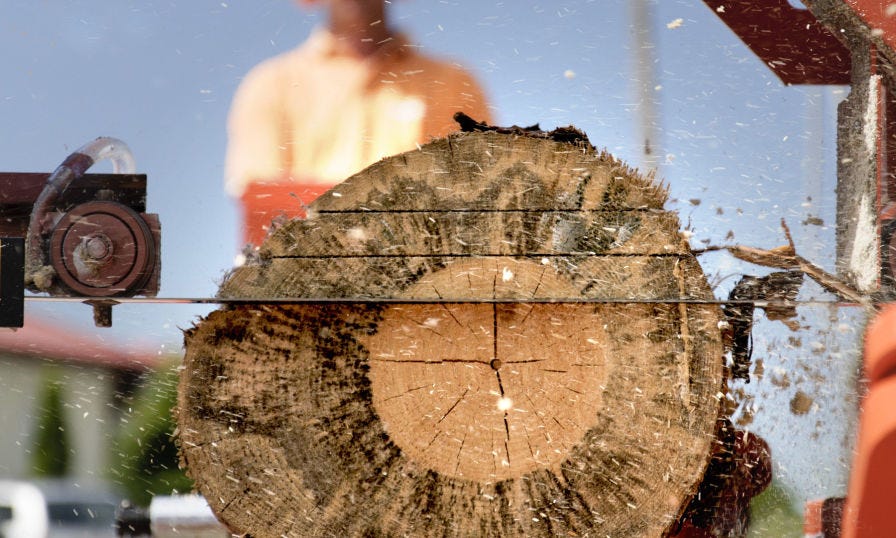A Smarter Sawmill for a Better Forest Future
By Wood-Mizer, Europe

In the late 1970s, a simple idea took hold of two American inventors – what if you could take a sawmill to the trees instead of the other way around? The possibility of saving on transportation costs intrigued both Don Laskowski and Dan Tekulve. They worked on several prototypes in their garage, and after four years, they had successfully created a truly mobile sawmill that was light, affordable, and could really cut wood well. In 1982, they founded Wood-Mizer with the motto – From Forest to Final Form.
Eco Benefits of Mobility
By taking the sawmill to the logs, the environmental impact of timber production is reduced. Fewer trucks are needed for deliveries, and fuel consumption and carbon dioxide emissions are reduced. Wood-Mizer's portable sawmills were a completely new product on the market in the 1980s, and as a result, a new niche industry suddenly formed. Sawmillers could efficiently and affordably travel from customer to customer and process any number of logs into lumber on site. In the old days, a small pile of logs would not be cost-effective to transport to a large sawmill or worth the local mill's time to process and would simply end up as firewood or left to decompose. With a mobile sawmill, those logs could be converted into valuable lumber and marketable wood products with the same or better quality than available previously.

Eco Benefits of Thin-kerf Bandsaw Blades
Wood-Mizer's success in building an affordable mobile sawmill was solely due to one factor – they used a thin-kerf bandsaw blade to cut the wood. Traditionally the sawmilling industry thought that 'bigger was better' because a thicker blade could cut faster. However, a thin-kerf blade with 1.5 mm thickness and kerf of 2 mm removes a minimal amount of wood with each cut compared with circular blades with thicknesses of 6 mm or large bandsaw blades with 3 to 4 mm thicknesses. So with Wood-Mizer blades, sawmillers were able to get more boards and less sawdust waste from every log. Depending on log size, total timber recovery can reach up to 80% instead of 50 to 60% for conventional wide kerf saw blades. Thin-kerf technology saves on raw materials by producing the same level of final wood products with less raw timber.
"The much greater yields of the thin-kerf are second to none and has positioned us to be very competitive on a daily basis," shared hardwood lumber producer Mike Junk from the USA. "We are getting the same amount of lumber while using 25% less timber and raw materials, which in turn, reduces transportation costs across the board."
Zoran Zakovlevich, a pallet producer from Serbia, remarks that he could get an additional 5 pallets out of every cubic meter of timber after transitioning to Wood-Mizer sawmills.

Eco Benefits of Reduced Energy Consumption
Wood-Mizer sawmills don't just offer advantages from one or two areas. They deliver comprehensive cost savings from a variety of perspectives. They positively affect many different operational costs, including energy consumption, which is often overlooked when investing in new machinery. Wood-Mizer's thinner blades reduce energy costs by requiring significantly less power to operate and cut effectively than other sawmilling methods. In addition, the blades themselves are cheaper and easier to replace and sharpen. Sharpening Wood-Mizer blades can be done with minimal training, whereas large blades require a sharpening specialist.

Portable Sawmilling – A New Industry and Lifestyle
Over the last 40 years, about 100,000 Wood-Mizer sawmills have been sold into more than 150 countries worldwide as the thin-kerf sawmilling’s 'niche' industry has grown and grown. Many people that previously were limited in their options for business diversification have found themselves operating successfully with a new sawmilling career. Farmers, homesteaders, estate owners, contract sawyers, tree surgeons, furniture workshops, woodworkers, natural parks, and established timber companies are countless examples of people successfully integrating a Wood-Mizer sawmill into their existing businesses and lifestyles. Many find that a sawmill allows them to begin a new enterprise, live more independently, and have a closer connection with the outdoors – all intangible assets created by owning a sawmill.
A Czech bus driver, Pavel Kadlec, shares that his life changed for the better when he decided to buy his own sawmill and offer custom cutting services locally. He likes to work at his own pace and knows that the work he is doing fulfills a need, and he's proud that the product he provides is of such high quality. "I'm my own boss now," he shares.
From Estonia, farmer Aigar Tuusis shares – "You look at your life differently when you have your own sawmill."
And sawmills seem to foster better social interactions as well in rural areas. From Italy, Anna de Guidi, who operates a pallet manufacturing company, shares: "A sawmill is the best tool to make many friends. Every day we meet with new local customers who become our friends."
"The Wood-Mizer is hands down the best investment we made for our farm," said business owner David Weyler from the USA. "It has returned the original investment over 6 times in 6 years without doing any commercial sawing. It has enabled us to improve the value of our assets as well as create a profitable business of our land without doing traditional farming.

Sawmills in the Circular Economy
Wood-Mizer sawmills generally function as the basis for small and medium-sized businesses, processing local timber for local end-users while employing local workers. This is a perfect example of sustainable development at the local level, positively impacting the larger regional or country-wide economy. This business model is precisely what many analysts have predicted for years – smaller companies will proliferate quickly and more efficiently by reacting to the market needs and incorporating new technology faster. Experts often call this a 'circular economy' where raw materials are reduced and zero waste. Promoting companies to adopt this model is very important to preserve the environment and stimulate innovation in business. The success experienced by small companies with Wood-Mizer sawmills confirms that the transition from the 'theoretical' to 'practical' is possible and happening today.

